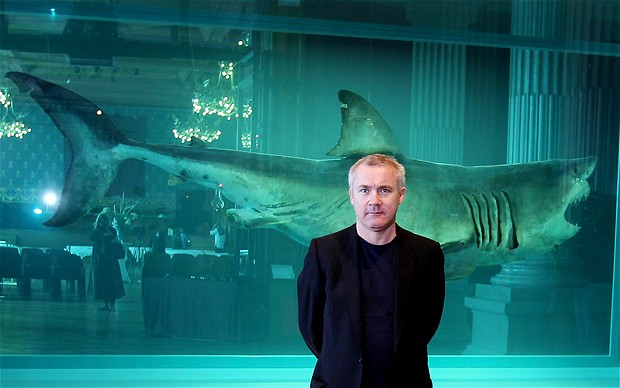There’s a truism in the investment world which says that when an opportunity is opened to the little guy, it’s time to look for the exits. Not necessarily to cut and run, but rather to devise an exit strategy.Â
 That’s what ran through my mind when I read an article in this week’s Bloomberg Business Week headlined Short Jackson Pollock! Go Long on Damien Hirst! It describes a vehicle for investing in art under development by a suburban St. Louis company called Liquid Rarity Exchange, which intends to securitize art works and thus open “the exclusive club of art speculation to the investing public.”
That’s what ran through my mind when I read an article in this week’s Bloomberg Business Week headlined Short Jackson Pollock! Go Long on Damien Hirst! It describes a vehicle for investing in art under development by a suburban St. Louis company called Liquid Rarity Exchange, which intends to securitize art works and thus open “the exclusive club of art speculation to the investing public.”
As the article says:
The Clayton, Mo., company says it has patented a technique for banks to take individual works or groups of works public, with the first offerings still 12 to 18 months away. Its argument is that by making paintings—as well as vintage cars, rare books, musical instruments, and other appraised goods—more liquid and subject to SEC regulation, the market will be fairer and priced more accurately. Also, museums would have a new way to raise funds by selling stakes in their collections while continuing to display the work of art.
This fund would mimic the private investment vehicles owning art that have been around for a couple of decades in various permutations, the LRE execs say.
They didn’t explain their vehicle very well in what is a very slim story. What’s weird and somewhat shocking is that while some anonymous Wall-Streeters pooh-poohed the idea, some art world players did not. Here’s collector/hedge-funder Adam Sender:
Any time you bring more liquidity to a market and it’s done properly, it’s a good thing, not a bad thing…The more liquidity you bring to a market, the more confidence you bring to it, and the more money flows in.
And here’s Jennifer Zatorski, a senior vice president at Christie’s:
This is a sign of a healthy global market.
No it isn’t. Those quotes are signs that maybe the art market is nearing the limit on new buyers (for the moment at least), but those with inventory want to make sure it hasn’t.  As Sender hints, keeping this party going requires an inflow of more money.
Photo Credit: Courtesy of the Daily Telegraph
